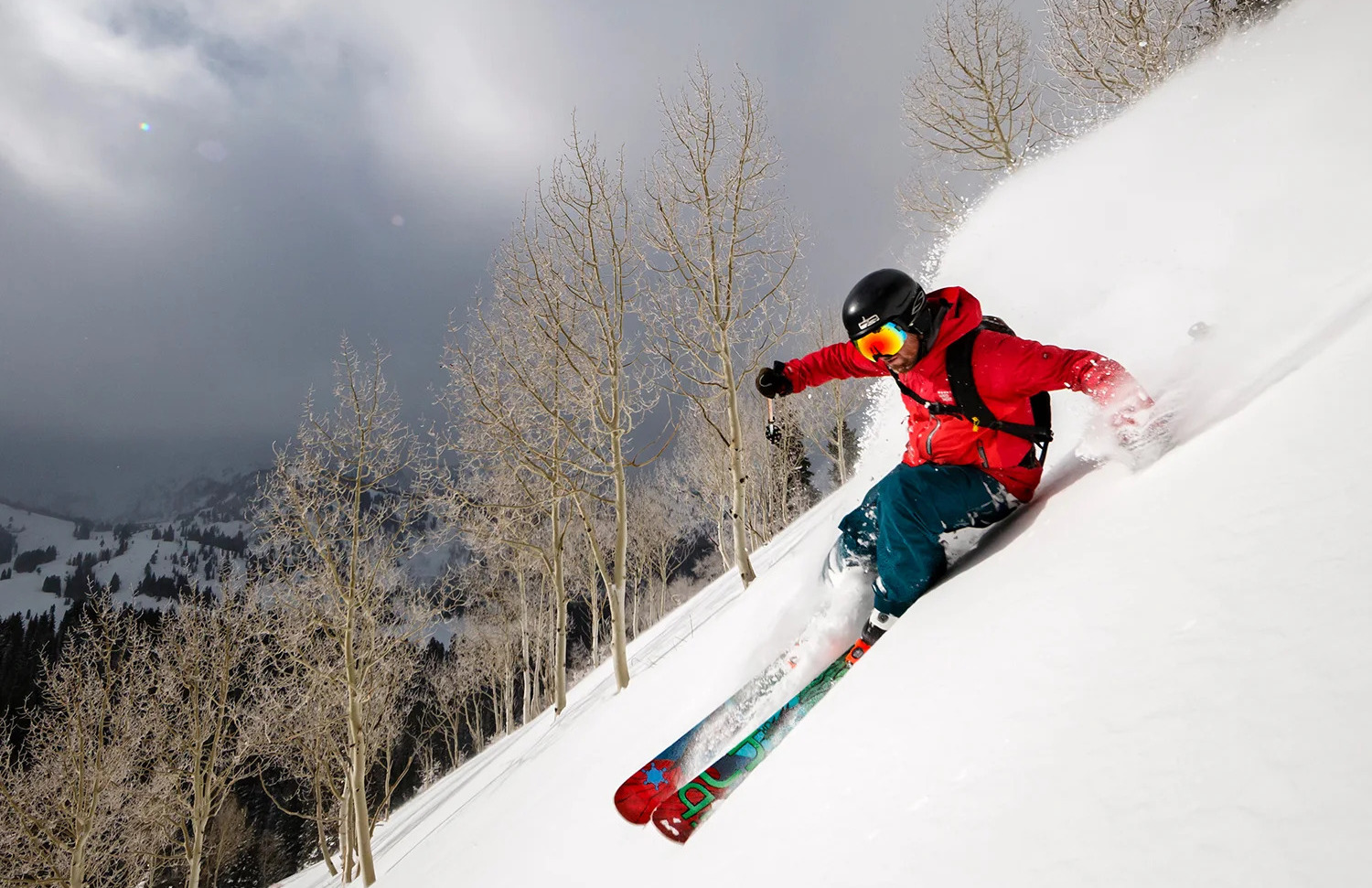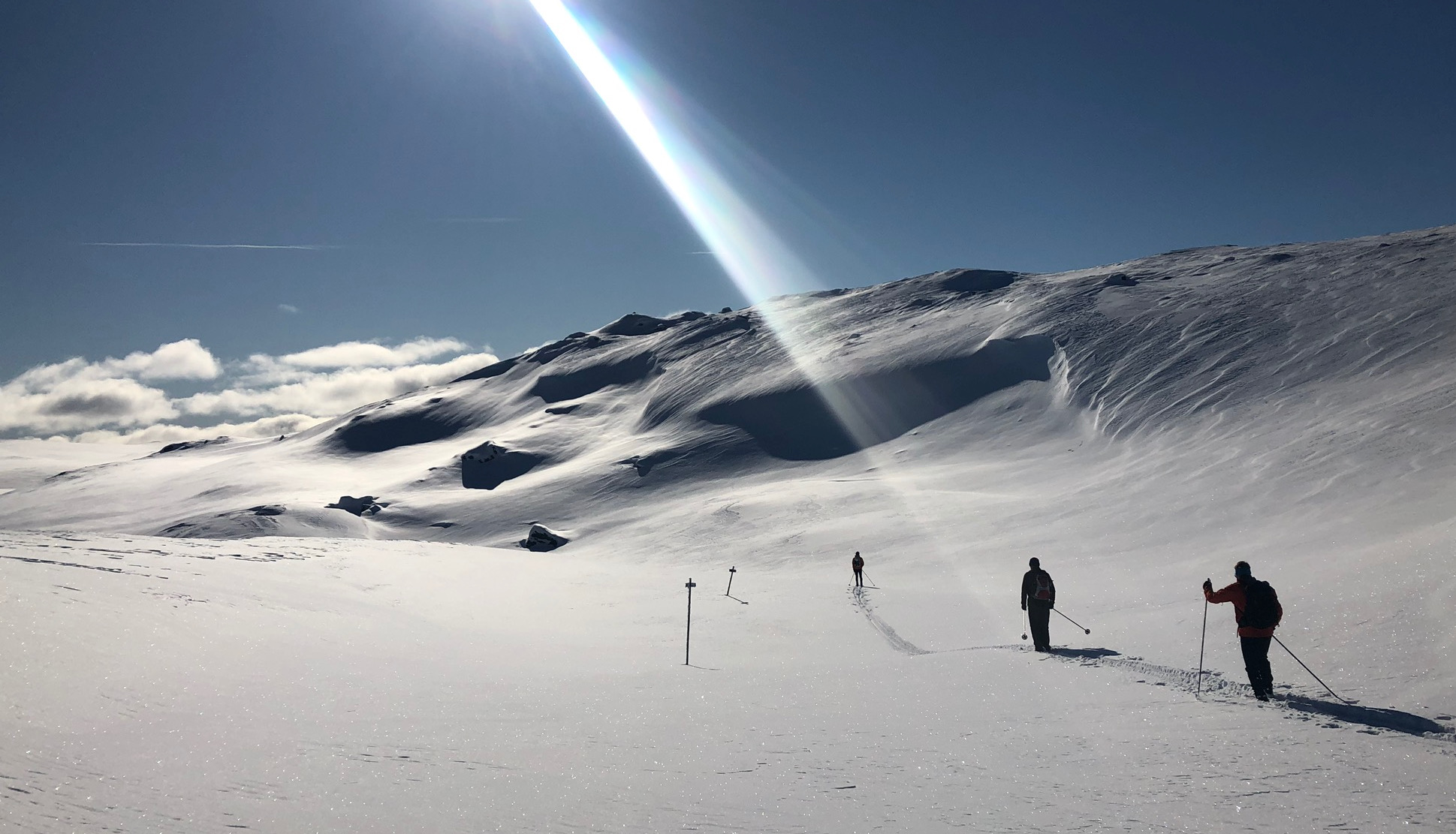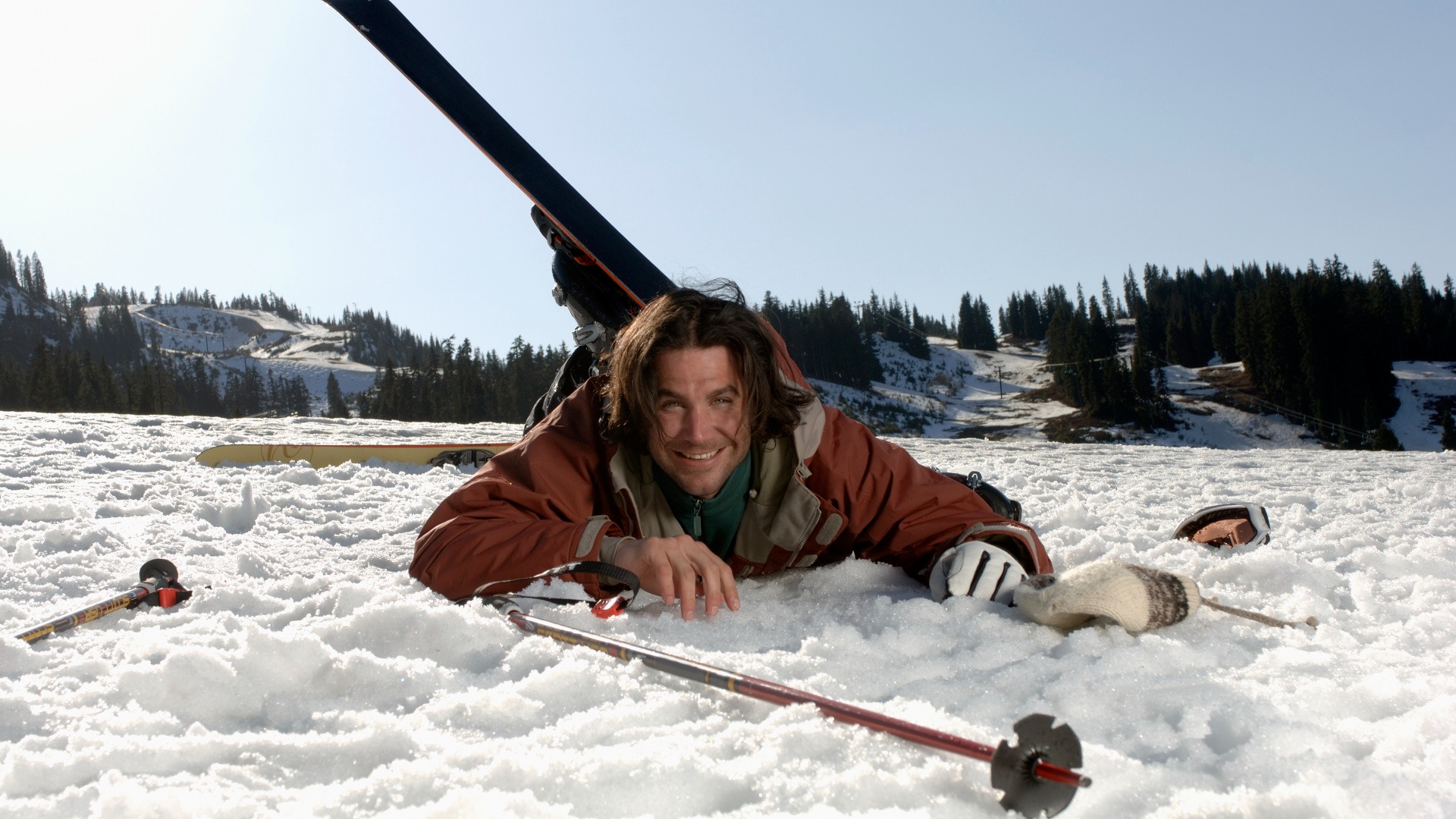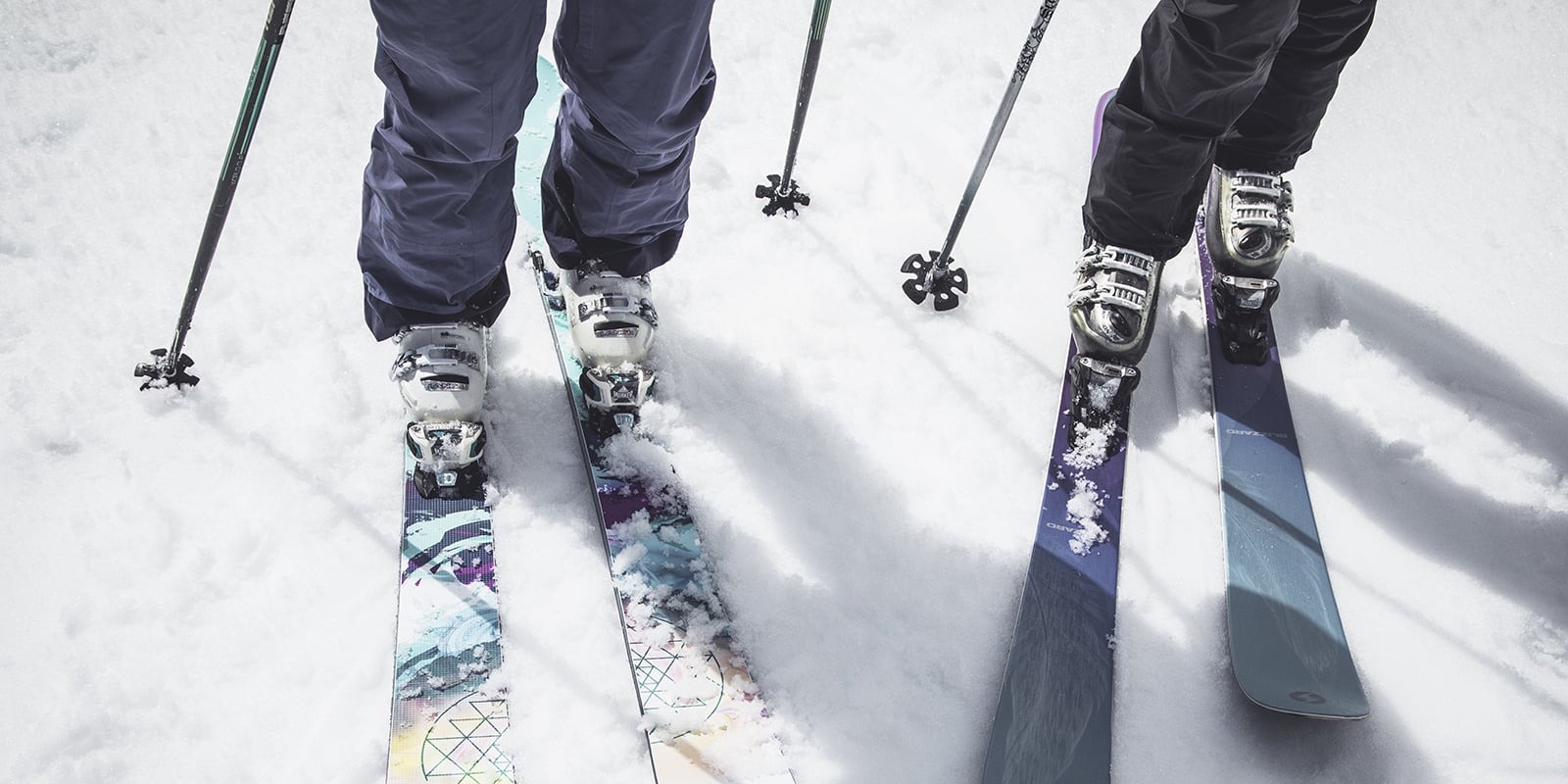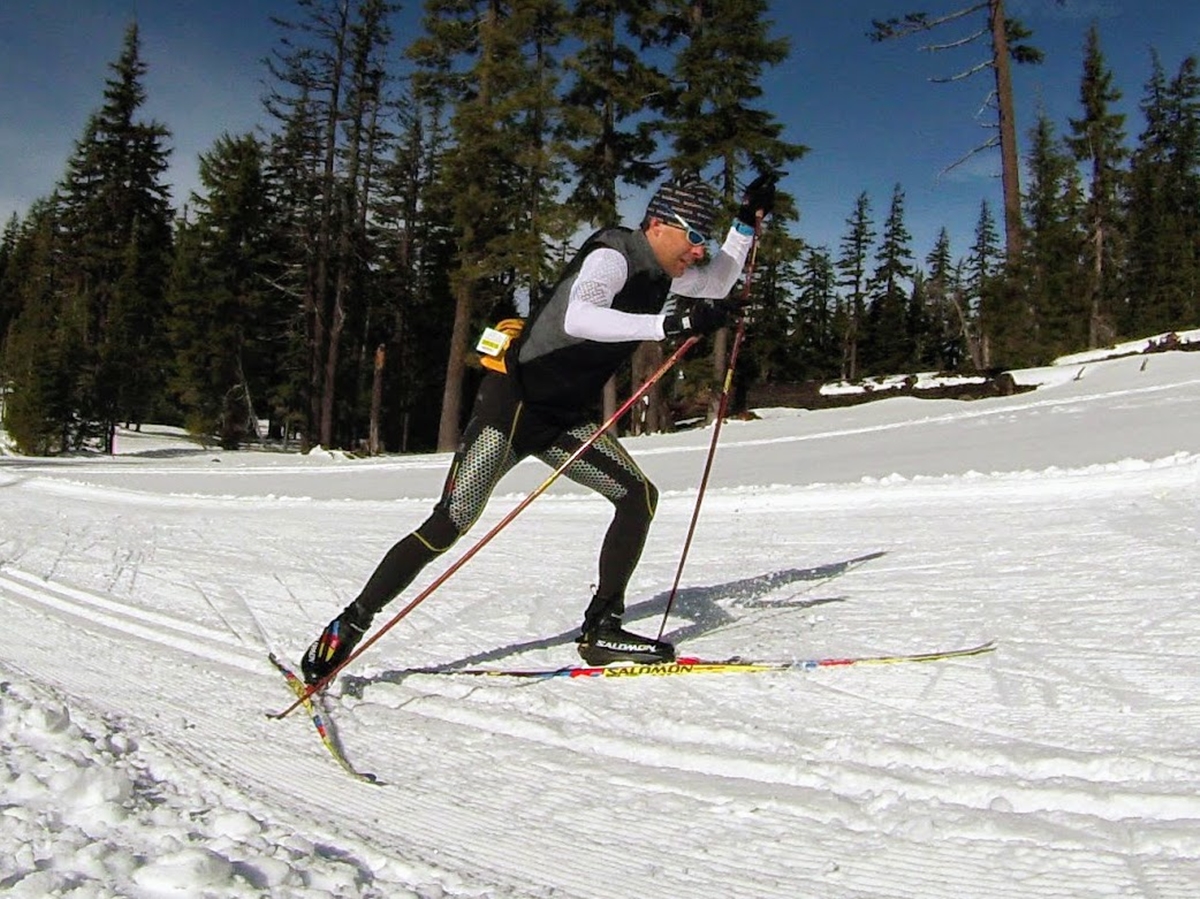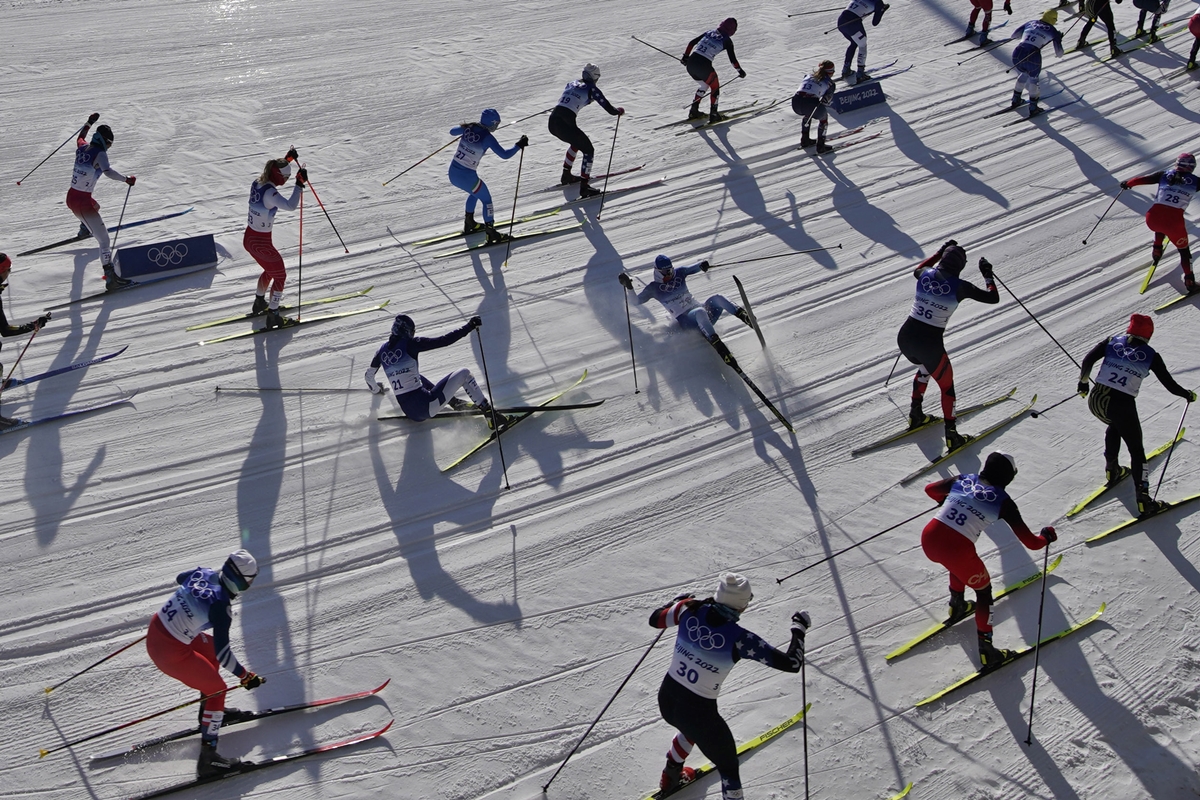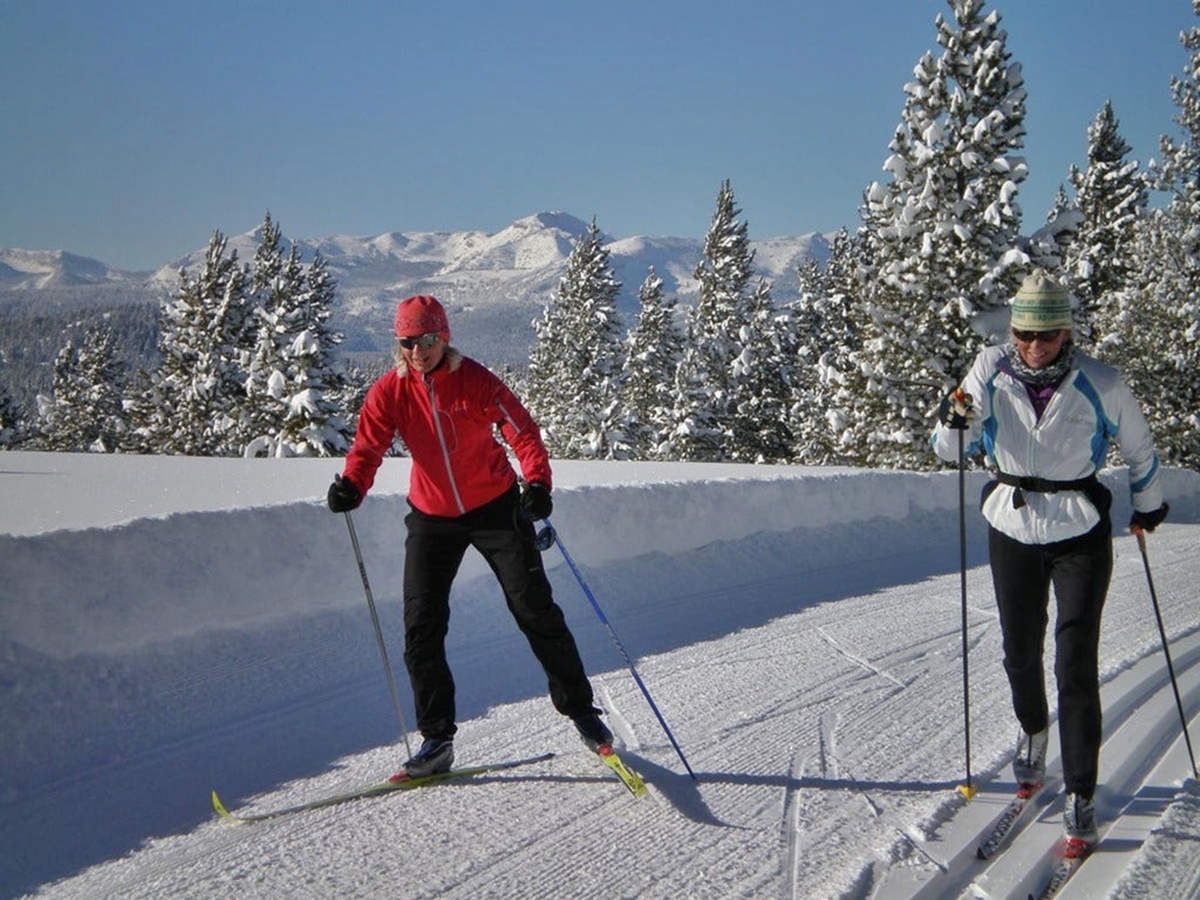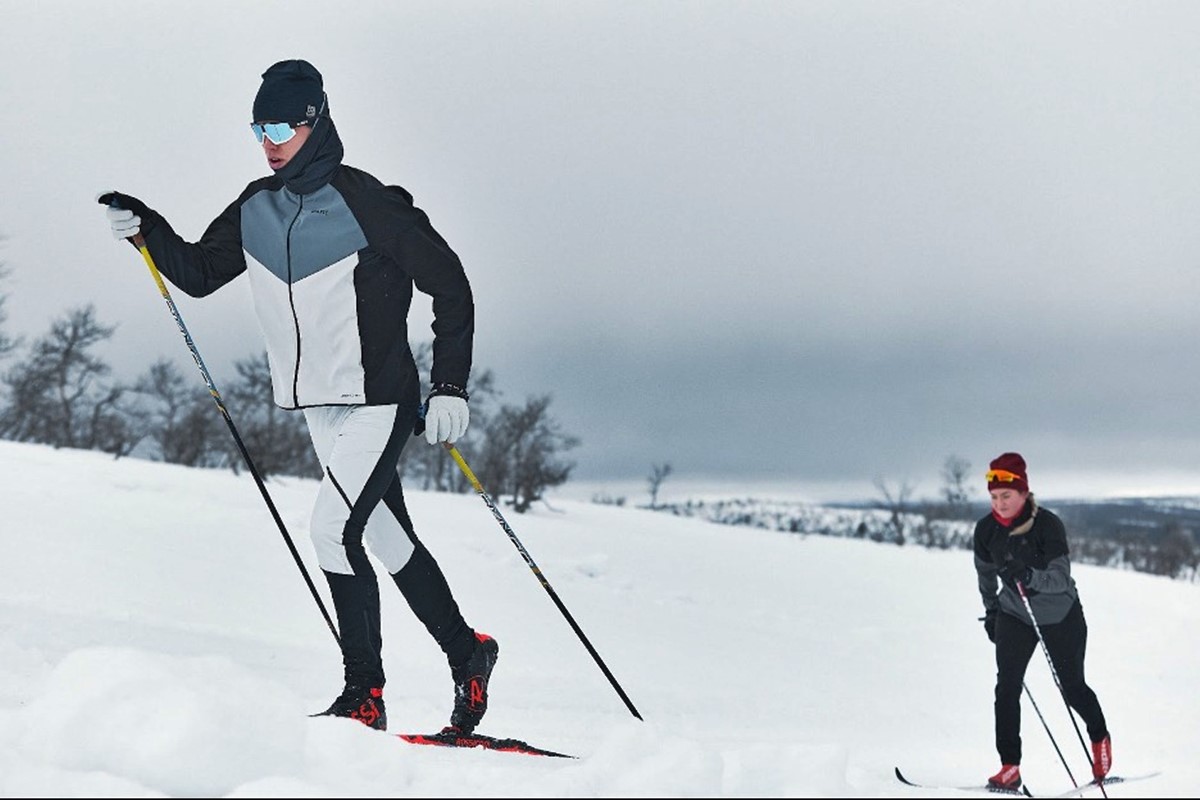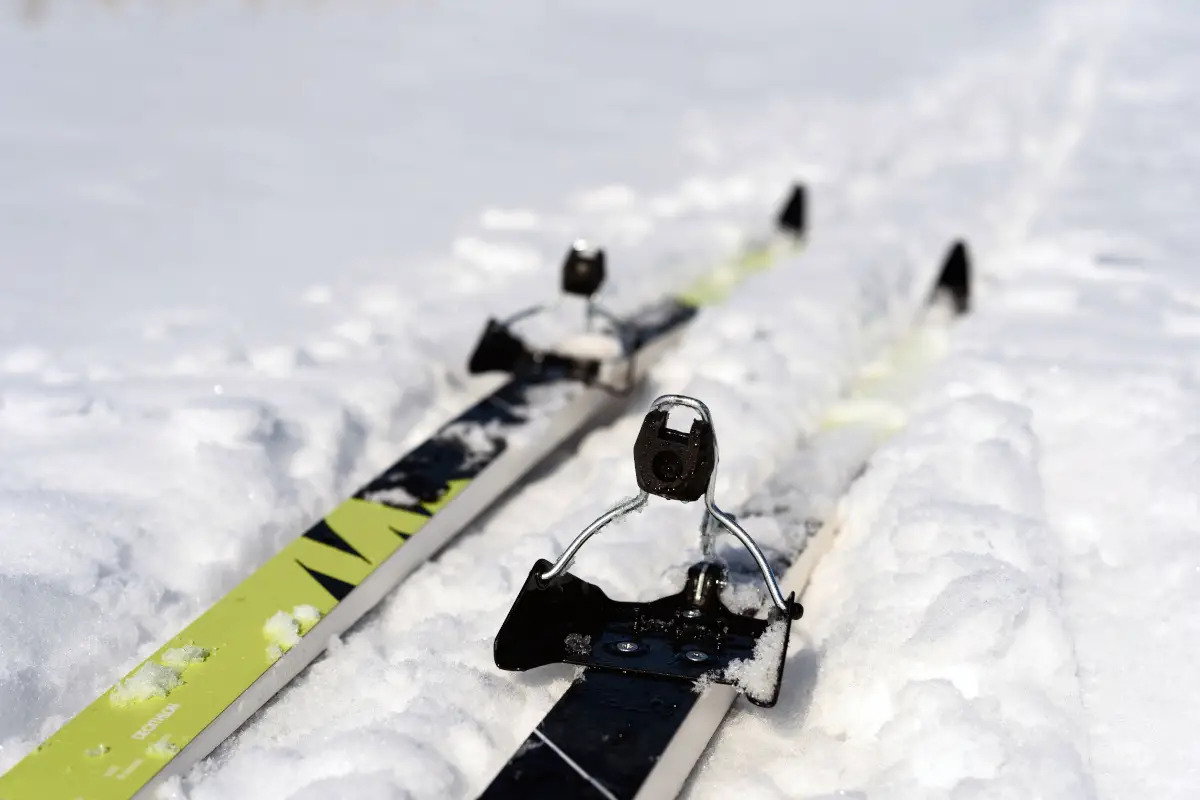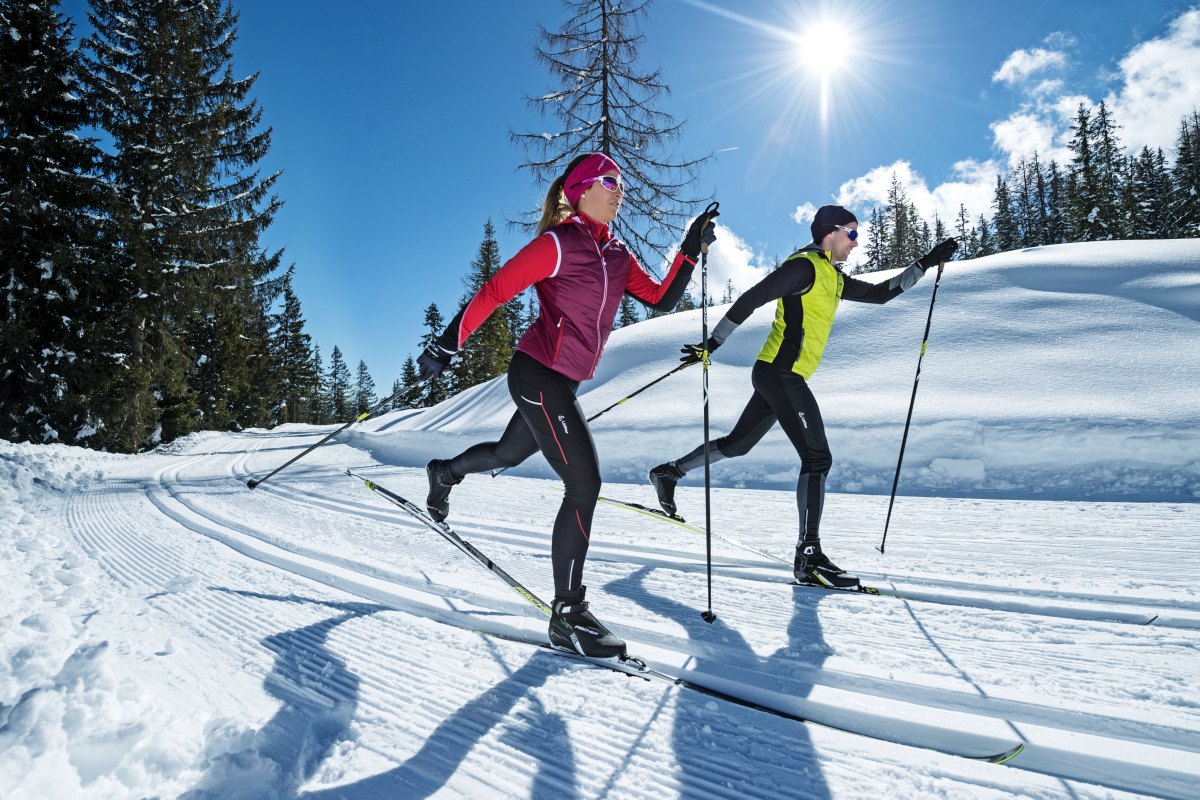Home>Misc>Product Reviews>What Kind Of Cross Country Skis To Buy
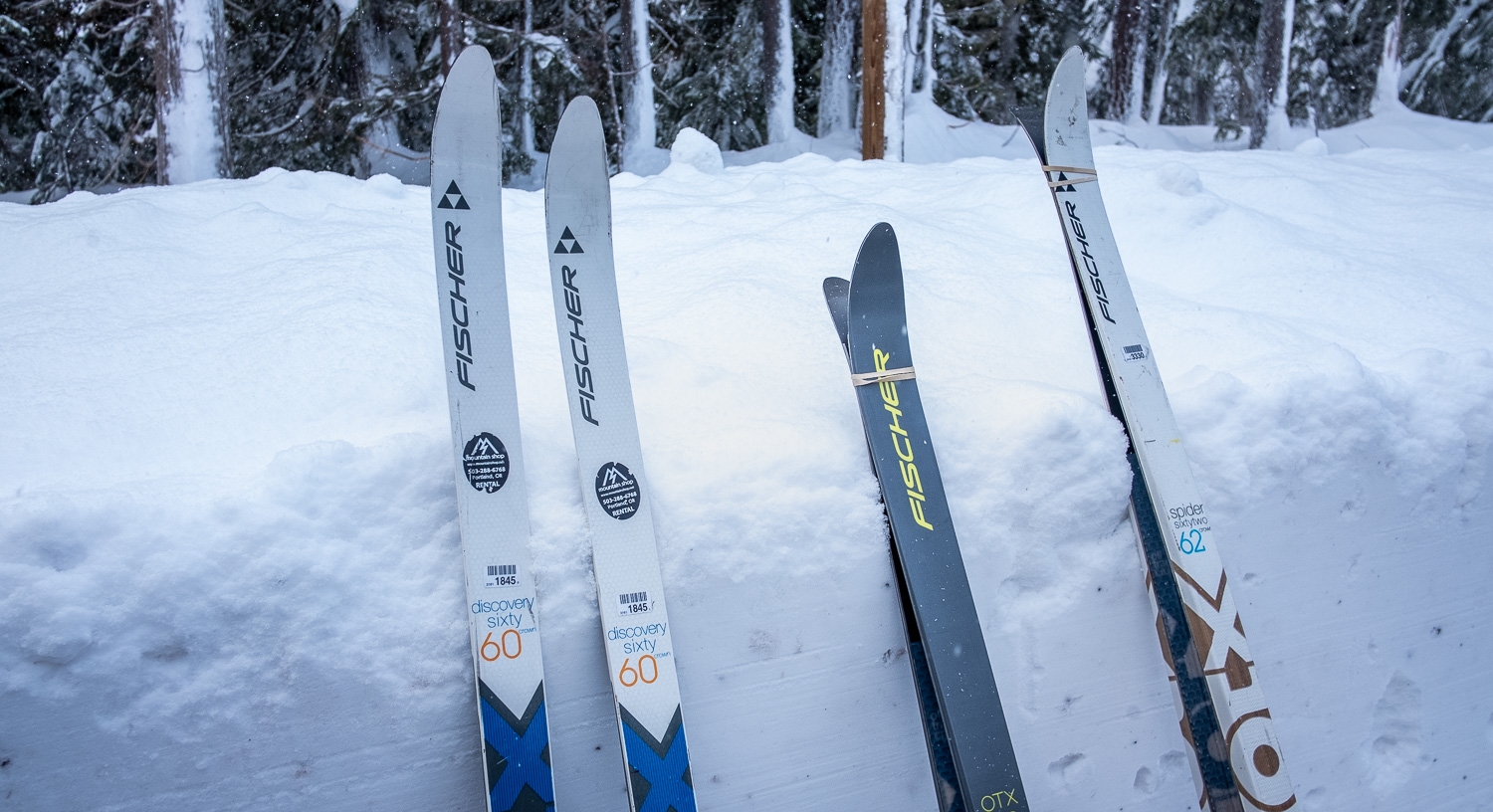

Product Reviews
What Kind Of Cross Country Skis To Buy
Modified: May 22, 2024
Looking for product reviews on cross country skis? Discover what kind of cross country skis to buy with our expert insights and recommendations.
Introduction
Cross country skiing is a popular winter sport that offers a unique and exhilarating outdoor experience. Whether you’re a beginner or an experienced skier, having the right equipment is crucial for enjoying this activity to the fullest. One of the most important pieces of equipment you’ll need is a pair of cross country skis. However, with so many different types and models available, choosing the right skis can be overwhelming.
In this article, we’ll guide you through the process of selecting the perfect cross country skis based on your skill level, skiing style, and the type of terrain you’ll be skiing on. We’ll provide you with valuable insights on different types of skis, their characteristics, and the factors you should consider before making a purchase.
Whether you’re interested in classic cross country skiing, skate skiing, backcountry exploration, or Nordic touring, we’ll help you make an informed decision. Furthermore, we’ll discuss the importance of choosing the right length and width of skis, the appropriate boots for your skiing style, the types of bindings available, and the importance of selecting the right ski poles. By the end of this article, you’ll have a clear understanding of what to look for when buying cross country skis and be ready to hit the slopes with confidence.
So, if you’re ready to embark on a thrilling skiing adventure, let’s dive in and explore the wonderful world of cross country skis!
Factors to Consider When Buying Cross Country Skis
When it comes to purchasing cross country skis, there are several important factors to consider to ensure that you find the right fit for your skiing style and skill level. By considering these factors, you’ll be able to choose skis that enhance your performance and provide you with the most enjoyable skiing experience. Let’s take a closer look at these factors:
- Skier Skill Level: The first thing to consider is your skill level. Skis are designed differently for beginners, intermediate skiers, and advanced skiers. If you’re just starting out, you’ll want to look for skis that offer stability and control. Intermediate skiers can opt for skis with more flex and responsiveness, while advanced skiers may prefer skis that are more performance-oriented.
- Skiing Style: Are you more inclined towards classic cross country skiing or skate skiing? Classic skiing involves a sliding motion with a straight stride, while skate skiing has a skating motion similar to ice skating. Different ski designs are optimized for each style, so it’s important to choose skis that cater to your preferred technique.
- Terrain: Consider the type of terrain you’ll be skiing on. If you plan to stick to groomed trails, you’ll want skis that are narrow and have a lighter construction for better glide. On the other hand, if you’re planning to venture into the backcountry or explore ungroomed terrain, you’ll need wider and more durable skis that provide better flotation and stability.
- Ski Length and Flexibility: The length of your skis is crucial to your performance. Longer skis offer better glide and stability, while shorter skis provide maneuverability and ease of turning. The flexibility of the skis also plays a role in their performance. Stiffer skis offer more stability and power, while softer skis are more forgiving and easier to maneuver.
- Weight and Durability: Consider the weight of the skis, especially if you plan to spend long hours on the trails. Lighter skis are more efficient and easier to handle. Additionally, durability is a key factor, especially if you’ll be skiing in rugged terrain. Look for skis with reinforced materials and solid construction to withstand the demands of your skiing adventures.
- Binding Compatibility: Ensure that the skis you choose are compatible with the bindings you have or plan to purchase. Different bindings may require specific mounting systems or compatibility with certain ski boots. It’s important to check the compatibility to ensure a secure and comfortable fit.
By taking these factors into account, you’ll be able to find cross country skis that match your abilities, skiing style, and the terrain you’ll be exploring. Keep in mind that trying out different skis before making a purchase can provide valuable insights into their performance and help you make an informed decision.
Classic Cross Country Skis
Classic cross country skiing is the traditional style of skiing that involves a sliding motion with a straight stride. It is perfect for beginners and those who prefer a more relaxed skiing experience. Classic skis are designed with a grip zone in the middle of the ski, often made of a fish scale pattern or a waxable base, which provides grip when kicking forward. The camber of the ski helps with gliding on flat terrain.
When choosing classic cross country skis, there are a few key factors to consider:
- Ski Length: The length of your classic skis is crucial for proper performance. As a general rule of thumb, skis should be between 15cm to 25cm taller than your height. Longer skis offer better glide and stability, while shorter skis provide maneuverability and ease of turning.
- Grip Zone: The grip zone on classic skis is essential for proper propulsion and control. Waxable skis require you to apply grip wax to the base of the ski according to the snow conditions. Fish scale pattern skis have specially designed scales under the foot that provide grip without the need for waxing.
- Flexibility: The flex of classic skis determines how the ski interacts with the snow and the skier’s weight. Stiffer skis provide more power and stability, while softer skis are more forgiving and easier to control. Choosing the right level of flex based on your weight and skiing ability is important for getting the most out of your classic skiing experience.
- Construction: Classic skis are typically made of lightweight materials to maximize efficiency. Skis with a light and responsive construction will provide better glide and easier maneuverability.
Classic cross country skis are versatile and suitable for various skiing terrains, from groomed tracks to backcountry trails. They offer a smooth and enjoyable skiing experience, allowing you to explore the outdoors at your own pace. Whether you’re a beginner or an experienced skier, classic cross country skis are a reliable choice for those who appreciate the beauty of this timeless skiing style.
Skate Cross Country Skis
Skate skiing is a dynamic and fast-paced cross country skiing technique that mimics the motion of ice skating. It requires a different type of ski than classic skiing to maximize speed and maneuverability. Skate cross country skis are designed with a shorter length, a stiffer flex, and a flat camber to ensure efficient gliding and excellent power transfer.
Here are some important factors to consider when choosing skate cross country skis:
- Ski Length: Skate skis are typically shorter than classic skis. The length of the ski should be based on your weight and skiing ability. Shorter skis provide better maneuverability and easier turning, while longer skis offer more stability and glide.
- Camber: Skate skis have a flat camber, which allows for more efficient gliding and power transfer during the skating motion. The absence of a grip zone facilitates a smooth glide on groomed trails and icy surfaces.
- Flexibility: Skate skis have a stiffer flex compared to classic skis. The increased stiffness provides better stability and control while skating. However, it’s important to choose a level of flex that matches your weight and skiing ability to ensure optimal performance.
- Construction: Skate skis are constructed with lightweight and responsive materials to enhance speed and maneuverability. Look for skis with a durable construction that can withstand the demands of intense skating movements and various snow conditions.
Skate cross country skiing requires proper technique and balance, making it an excellent choice for those seeking a more challenging and exhilarating skiing experience. With its fast-paced nature and fluid movements, skate skiing provides a fantastic full-body workout while allowing you to enjoy the winter landscape in a new and exciting way.
Whether you’re a seasoned skier looking to improve your speed and technique or a beginner exploring different skiing styles, skate cross country skis are essential equipment to master this dynamic and thrilling sport.
Backcountry Cross Country Skis
If you’re an adventurous skier who loves exploring off-piste terrain and challenging backcountry trails, backcountry cross country skis are designed specifically for you. These skis are built to handle ungroomed snow, variable conditions, and steep descents, providing you with the necessary stability and control in more demanding environments.
Here are some important factors to consider when choosing backcountry cross country skis:
- Ski Width: Backcountry skis are wider than traditional skis to provide better flotation in deep snow and variable terrain. The width of the skis allows for better stability, making them suitable for off-trail adventures.
- Construction: Backcountry skis are constructed with durable materials to withstand rough terrain. They often have reinforced edges and a sturdy construction to handle rocks, tree branches, and other obstacles commonly encountered in backcountry skiing.
- Camber: Backcountry skis may have a combination of camber and rocker profiles. The camber provides good contact with the snow, while the rocker helps with floating over deep snow and maneuverability.
- Binding Compatibility: Consider the type of bindings that are compatible with backcountry skis. Popular options include NNN BC, SNS BC, or 75mm (3-pin) bindings, each offering different levels of stability and control.
- Skin Compatibility: Backcountry skis often have the option to add climbing skins. These specialized sticky strips adhere to the base of the ski, providing traction and grip when ascending steep slopes.
Backcountry skiing requires proper knowledge, skills, and avalanche safety equipment. It’s crucial to be well-prepared and have the necessary training before venturing into these more rugged and remote environments.
Backcountry skiing offers a thrilling and immersive experience, allowing you to explore untouched snow-covered landscapes. With the right backcountry cross country skis, you can confidently tackle challenging ascents and exhilarating descents, forging your own path in the winter wilderness.
Nordic Touring Cross Country Skis
If you’re someone who enjoys long-distance skiing adventures and exploring a variety of terrain, Nordic touring cross country skis are the perfect choice. These skis are designed to provide a balance between efficiency and versatility, allowing you to explore groomed trails, ungroomed terrain, and everything in between.
Here are some key factors to consider when choosing Nordic touring cross country skis:
- Ski Length: The length of Nordic touring skis depends on your weight, skiing ability, and the type of terrain you’ll be exploring. Longer skis offer better glide and stability over flat terrain, while shorter skis provide maneuverability and ease of turning on more technical trails.
- Ski Width: Nordic touring skis usually have a moderate width to handle a variety of conditions. The width strikes a balance between stability and maneuverability, making them suitable for both groomed and ungroomed trails.
- Camber: The camber of Nordic touring skis can vary depending on the specific model. Some skis have a traditional camber, while others have a light or Nordic rocker profile. The camber affects the ski’s performance, including its ability to grip and glide.
- Construction: Nordic touring skis are typically built with durability in mind. They often feature reinforced edges and bases to withstand the rigors of off-piste skiing. Look for skis made with high-quality materials that can handle various terrains and conditions.
- Binding Compatibility: Consider the type of bindings that are compatible with Nordic touring skis. Popular options include NNN, SNS, or NIS bindings. Make sure the bindings you choose match both your boots and the type of skiing you’ll be doing.
Nordic touring skiing offers the freedom to explore vast landscapes and enjoy the serenity of nature. It’s a versatile style of skiing that allows you to choose your own adventure, whether you prefer groomed trails, backcountry exploration, or multi-day ski touring trips.
With the right Nordic touring cross country skis, you can embark on unforgettable skiing journeys, immersing yourself in the beauty of the winter wilderness and discovering new destinations along the way.
Cross Country Ski Length and Width Guide
When it comes to finding the right cross country skis, one of the critical factors to consider is the length and width of the skis. These factors can significantly impact your skiing performance and overall enjoyment on the trails. Let’s take a closer look at how to determine the appropriate length and width for your cross country skis.
Ski Length:
- Classic Skis: For classic skiing, the general rule of thumb is to choose skis that are between 15cm to 25cm taller than your height. The taller skis provide better glide and stability, while shorter skis offer more maneuverability and ease of turning.
- Skate Skis: Skate skis are typically shorter than classic skis. The ideal length depends on your weight and skiing ability. Shorter skis offer better maneuverability, while longer skis provide more stability and glide.
- Backcountry Skis: Backcountry skis tend to be slightly longer for better flotation in deep snow. Consider your weight and the type of terrain you’ll be skiing on when choosing the length of backcountry skis.
Ski Width:
- Groomed Trails: For skiing on groomed trails, skis with a narrower width are usually preferred. Narrow skis offer better glide and control on compacted snow.
- Ungroomed Trails: If you plan to ski in ungroomed or variable snow conditions, wider skis with more surface area provide better flotation and stability. They can handle soft or deep snow more efficiently.
Keep in mind that these are general guidelines, and personal preference also plays a role in ski length and width selection. Your weight, skiing ability, and the specific terrain you’ll be skiing on should be considered alongside these guidelines. It’s always beneficial to seek advice from experienced skiers or consult with a knowledgeable ski shop to ensure you find the right skis that match your skills and needs.
Remember, finding the perfect cross country ski length and width can greatly enhance your skiing experience by maximizing glide, control, and overall performance on the trails.
Choosing the Right Cross Country Ski Boots
Selecting the right cross country ski boots is crucial for comfort, control, and overall performance on the trails. Your boots are responsible for transmitting your movements to the skis and providing support and warmth throughout your skiing endeavors. Here are some key factors to consider when choosing cross country ski boots:
- Skiing Style: Determine your preferred skiing style, whether it’s classic skiing, skate skiing, backcountry skiing, or Nordic touring. Different styles often require specific boot designs to provide optimal support and performance.
- Boot Flex: Consider the flex of the boots, which relates to their stiffness and responsiveness. The flex should match your skiing ability and the level of control you desire. Stiffer boots offer more support and stability, while softer boots provide more flexibility and comfort.
- Compatibility: Ensure that the boots you choose are compatible with your bindings. There are different binding systems available, such as NNN, SNS, or 75mm (3-pin), so it’s essential to select boots that match the appropriate binding system.
- Boot Fit: Proper fit is crucial for comfort and control on the trails. Visit a ski shop and try on different boots to find the perfect fit. Pay attention to the width, volume, and heel support to ensure a snug and secure fit without pinching or discomfort.
- Insulation and Waterproofing: Consider the insulation and waterproofing features of the boots, especially if you’ll be skiing in cold and wet conditions. Look for boots with sufficient insulation to keep your feet warm and dry, while also allowing for breathability to prevent overheating.
- Boot Weight: The weight of the boots can impact your overall skiing experience, especially during long-distance outings. Lighter boots contribute to less fatigue and more efficient movement, but keep in mind that lighter boots may sacrifice some insulation or support.
It’s important to prioritize comfort, support, and functionality when choosing your cross country ski boots. Remember to also consider your skiing skill level, the terrain you’ll be skiing on, and any specific features that can enhance your performance and enjoyment on the trails.
Investing in the right cross country ski boots that cater to your specific needs will significantly contribute to a pleasurable and successful skiing experience.
Cross Country Ski Bindings: What to Look For
When it comes to cross country skiing, choosing the right bindings is crucial for a secure and efficient connection between your boots and skis. Bindings play a significant role in transferring your energy and movements to the skis, providing control and stability on the trails. Here are some key factors to consider when selecting cross country ski bindings:
- Binding System: There are various binding systems available, such as NNN (New Nordic Norm), SNS (Salomon Nordic System), and 75mm (3-pin) bindings. Ensure that the bindings you choose are compatible with your boots and skis. Some systems provide automatic step-in convenience, while others require manual entry and exit.
- Ski Compatibility: Check the compatibility of the bindings with your skis. Different skis have specific binding mounting patterns, so make sure the bindings align with the pre-drilled holes or can be properly attached to your skis.
- Control and Stability: Look for bindings that offer good control and stability on various terrains. Consider the level of side-to-side and forward flex that the bindings provide. This will affect how well you can transfer power and maintain control while skiing.
- Boot Support: Choose bindings that provide adequate support and hold for your boots. The bindings should securely hold your boots in place, preventing unnecessary movement or slipping during skiing. Consider the stiffness and adjusting mechanisms of the bindings to find the right level of boot support.
- Release Mechanism: Some bindings feature a release mechanism that allows your boots to detach from the bindings in case of a fall or high impact. This can provide an added level of safety and reduce the risk of injury.
- Bindings Weight: The weight of the bindings can impact the overall weight of your ski setup. Lighter bindings can contribute to a more efficient and enjoyable skiing experience, especially during long-distance outings.
It’s recommended to consult with a knowledgeable ski shop or experienced skiers to ensure you choose bindings that are compatible with your boots, skis, and intended skiing style. They can offer valuable advice and guide you towards bindings that suit your needs and preferences. Ultimately, selecting the right cross country ski bindings will enhance your skiing performance, comfort, and safety on the trails.
Cross Country Ski Poles: Which Ones to Choose
When it comes to cross country skiing, having the right poles is just as important as having the right skis and boots. Ski poles provide balance, stability, and propulsion, helping you navigate the terrain and maintain a proper rhythm while skiing. Here are some key factors to consider when selecting cross country ski poles:
- Material: Cross country ski poles are typically made of lightweight materials such as aluminum, carbon fiber, or a combination of both. Aluminum poles are more affordable and durable, while carbon fiber poles offer increased stiffness, lightness, and improved vibration absorption.
- Pole Length: The length of your ski poles depends on your height and skiing style. The general rule of thumb is to multiply your height by a factor of 0.85 to determine the ideal pole length for classic skiing. For skate skiing, the poles are typically longer, usually calculated by multiplying your height by a factor of 0.9 to 0.95.
- Pole Basket Size: Pole baskets are the round discs at the bottom of the pole that prevent the pole from sinking too deeply into the snow. The size of the basket should match the terrain you’ll be skiing on. Larger baskets provide better flotation and stability in deep snow, while smaller baskets are suitable for groomed trails and hard-packed snow.
- Grip Type: The grip on cross country ski poles should be comfortable and provide a secure hold. Common grip materials include cork, foam, or rubber. Cork grips are lightweight, moisture-wicking, and mold to the shape of your hand. Foam and rubber grips offer good insulation and grip, especially in wet conditions.
- Strap System: The strap system should securely hold your hands to the poles while allowing for easy release when needed. Adjustable straps are preferable, as they can be customized to fit your hand size and provide optimal control and comfort.
- Shock Absorption: Some ski poles feature shock absorption technology to reduce strain on your wrists and elbows while absorbing vibrations. This can be particularly beneficial when skiing on uneven or rough terrain.
Being aware of these factors will help you choose cross country ski poles that suit your height, skiing style, and terrain preferences. Trying out different poles and consulting with experienced skiers or ski shop experts can provide additional insights and help you find the optimal poles for your needs.
Remember, selecting the right cross country ski poles is essential for maximizing your performance, comfort, and enjoyment on the trails.
Conclusion
Cross country skiing is a thrilling and rewarding winter activity that allows you to explore the beauty of the outdoors while staying active. Choosing the right cross country skis, boots, bindings, poles, and other equipment is essential for optimizing your performance, comfort, and enjoyment on the trails.
By considering factors such as your skill level, skiing style, terrain, and personal preferences, you can find the perfect equipment for your needs.
Classic cross country skis are ideal for beginners and those who prefer a more relaxed skiing experience. Skate skis offer a dynamic and fast-paced skiing style that mimics the motion of ice skating. Backcountry skis are designed for adventurous skiers who love exploring off-piste terrain. Nordic touring skis provide a versatile option for long-distance adventures and exploring various terrains.
When choosing ski boots, consider factors such as skiing style, boot flex, compatibility, fit, insulation, and waterproofing. Ski bindings should be selected based on compatibility, control, stability, boot support, release mechanisms, and weight. Ski poles should be chosen with consideration for the material, length, basket size, grip type, strap system, and shock absorption features.
Remember, personal preferences may vary, so it’s crucial to find equipment that suits your specific needs. Trying out different options, consulting with experts, and seeking advice from experienced skiers can help in making informed decisions.
With the right cross country skiing equipment, you can embark on exhilarating skiing adventures, explore breathtaking winter landscapes, and experience the joy and freedom of gliding through the snow-covered trails.
So, gear up, hit the slopes, and enjoy the endless possibilities of cross country skiing!
